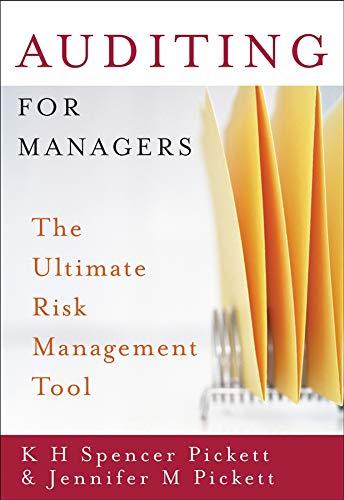Q6: If you were Clive Jones, what would you recommend to the board and why?
Q7 What are some issues to be concerned about when Increasing leverage (list at least 2)? Discuss in detail
Q9: Is it fair to assume that if profitability were positively affected in the short run, due to the higher debt ratio, the stock price would increase? Explain.
USING THE BELOW DATA PLEASE HELP ANSWER THE 3 QUESTIONS ABOVE, thank you!



Q4: How would the key profitability ratios of the firm be affected if the firm were to raise all of the capital by issuing 5-year notes? All Debt Income Statement Information All Equity - No Debt Income Statement Information Current Current 15,000,000 2,250,000 Growth in Revenues Revenues EBIT Interest EBT Net Income With $5,000,000 Expansion Worst Case Expected Case Best Case 10% 30% 50% 16,500,000 $ 19,500,000 $ 22,500,000 2,475,000 $ 2,925,000 $ 3,375,000 500,000 $ 500,000 $ 500,000 1,975,000 $ 2,425,000 $ 2,875,000 1,185,000 $ 1,455,000 $ 1,725,000 $ $ $ $ $ Best Case 50% 22,500,000 3,375,000 Growth in Revenues Revenues EBIT Interest EBT Net Income $ $ $ $ $ 15,000,000 2,250,000 $ $ $ $ $ With $5,000,000 Expansion Worst Case Expected Case 10% 30% 16,500,000 $ 19,500,000 $ 2,475,000 $ 2,925,000 $ $ $ 2,475,000 $ 2,925,000 $ 1,485,000 $ 1,755,000 $ 2,250,000 1,350,000 2,250,000 1,350,000 3,375,000 2,025,000 # of shares EPS 1,000,000 1.350 1,000,000 1.185 1,000,000 1.455 1,000,000 1.725 # of shares EPS 1,000,000 1.350 1,500,000 0.990 1,500,000 1.170 $ 1,500,000 1.350 $ $ $ $ $ $ $ Balance Sheet Information Assets Total Assets Balance Sheet Information Assets Total Assets $ 15,000,000 $ 20,000,000 $ 20,000,000 $ 20,000,000 $ 15,000,000 $ 20,000,000 $ 20,000,000 $ 20,000,000 $ 5,000,000 5,000,000 5,000,000 Libilities and Owner's Equity Current Liabilities Debt Equity Total Liabilities and O.E. $ $ $ $ $ $ 5,000,000 $ 5,000,000 $ 10,000,000 $ 20,000,000 $ 5,000,000 $ 5,000,000 5,000,000 $ 5,000,000 10,000,000 $ 10,000,000 20,000,000 $ 20,000,000 Libilities and Owner's Equity Current Liabilities Debt Equity Total Liabilities and O.E. $ $ $ $ $ $ $ $ 5,000,000 $ $ 15,000,000 $ 20,000,000 $ 5,000,000 $ $ 15,000,000 $ 20,000,000 $ $ 10,000,000 15,000,000 10,000,000 15,000,000 15,000,000 20,000,000 Long-term Debt/Equity Ratio Net Profit Margin Total Asset Turnover Equity Multiplier Return on Assets Return on Equity 0.00% 9.00% 1.00 1.50 9.00% 13.50% 50.00% 7.18% 0.83 2.00 5.93% 11.85% 50.00% 7.46% 0.98 2.00 7.28% 14.55% 50.00% 7.67% 1.13 2.00 8.63% 17.25% Long-term Debt/Equity Ratio Net Profit Margin Total Asset Turnover Equity Multiplier Return on Assets Return on Equity 0.00% 9.00% 1.00 1.50 9.00% 13.50% 0.00% 9.00% 0.83 1.33 7.43% 9.90% 0.00% 9.00% 0.98 1.33 8.78% 11.70% 0.00% 9.00% 1.13 1.33 10.13% 13.50% Q5: What is the Break-Even EBIT? What does it indicate to you? Data for Break-Even EBIT Graph: All Debt Income Statement Information Growth in Revenues Revenues EBIT Interest $ $ $ $ $ Additional Scenarios -50% -30% 7,500,000 $ 10,500,000 $ 1,125,000 $ 1,575,000 $ 500,000 $ 500,000 $ 625,000 $ 1,075,000 $ 375.000 $ 645,000 $ With $5,000,000 Expansion Worst Case -10% 10% 13,500,000 $ 16,500,000 $ 2,025,000 $ 2,475,000 $ 500,000 $ 500,000 $ 1,525,000 $ 1,975,000 $ 915,000 $ 1,185,000 $ Expected Case 30% 19,500,000 $ 2,925,000 $ 500,000 $ 2,425,000 $ 1,455,000 $ Best Case 50% 22,500,000 3,375,000 500,000 2,875,000 1,725,000 EBT Net Income # of shares Equity 1,000,000 10,000,000 1,000,000 10,000,000 $ 1,000,000 10,000,000 $ 1,000,000 10,000,000 1,000,000 10,000,000 $ 1,000,000 10,000,000 $ $ $ EPS $0.3750 $0.6450 $0.9150 $1.1850 $1.4550 $1.7250 No Debt Income Statement Information Growth in Revenues Revenues EBIT Interest EBT Net Income Additional Scenarios -50% -30% 7,500,000 $ 10,500,000 $ 1,125,000 $ 1,575,000 $ $ $ 1,125,000 $ 1,575,000 $ 675,000 $ 945,000 $ $ $ $ $ $ With $5,000,000 Expansion Worst Case -10% 10% 13,500,000 $ 16,500,000 $ 2,025,000 $ 2,475,000 $ $ $ 2,025,000 $ 2,475,000 $ 1,215,000 $ 1,485,000 $ Best Case 50% 22,500,000 3,375,000 Expected Case 30% 19,500,000 $ 2,925,000 $ $ 2,925,000 $ 1,755,000 $ 3,375,000 2,025,000 # of shares Equity 1,500,000 15,000,000 1,500,000 15,000,000 1,500,000 15,000,000 1,500,000 15,000,000 1,500,000 15,000,000 1,500,000 15,000,000 $ EPS $0.4500 $0.6300 $0.8100 $0.9900 $1.1700 $1.3500 Break-Even EBIT: All Equity Financing Proposed Capital Structure with Debt EPS EPS 11 500,000.00 EBIT 1,500,000 EBIT - $ 1,000,000 Break-Even EBIT = $ 1,500,000 At Break-Even EBIT: All Equity Financing Proposed Capital Structure with Debt EPS = EPS After-Tax EPS = EPS









